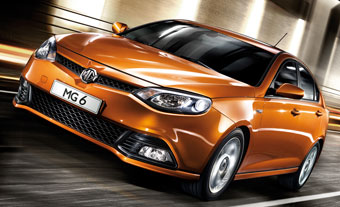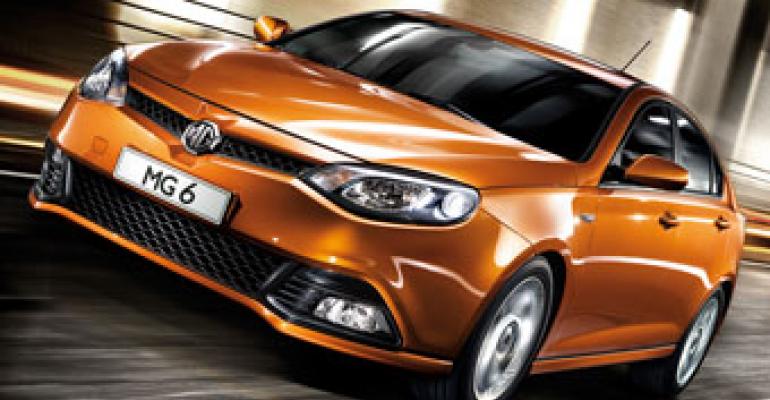
China’s indigenous auto makers’ ambitious expansion into markets abroad is gaining momentum.
Although there is no master plan similar to the RMB100 billion ($15.4 billion) New Energy Vehicles project recently announced in Beijing, the aim is the same: to hasten the creation of a world-class Chinese automotive industry.
“The Chinese government is revising the Automobile Industrial Policy, in part to ‘lead enterprises of all types to invest abroad and establish international sales networks and famous brands,’” says Tomoo Marukawa, a Tokyo University professor. “Global expansion will be funded mainly by loans from state banks.”
A comprehensive list of total spending made and planned so far has not been revealed, but the financial inducements are generous.
For example, the China Africa Fund established in 2007 to date has made RMB32.3 billion ($5 billion) available over a period of five years, with the first phase of RMB6.5 billion ($1 billion) funded by the China Development Bank.
The bank also is providing a RMB43 billion ($6.6 billion) line of credit over the next five years to help Chery Automobile, the country’s biggest independent domestic maker, strengthen its position overseas.
“The central government has a general plan to push Chinese auto makers onto the international stage and this year is encouraging them to expand their presence in markets in Africa, South America and parts of Asia, where demand for inexpensive cars is growing thanks to rapid infrastructure development often funded by China,” analyst Namrita Chow reports in a recent IHS Automotive note.
“Most local auto makers have announced plans to build plants overseas,” she adds.

Emerging markets are the prime target, serving as a testing ground and eventually a springboard into mature industrial nations.
“If you want to be a sustainable auto maker, you have to be global. If you are not, sooner or later you will be in trouble,” Wang Dazong, president of Beijing Automotive, China’s fifth-largest automotive group, told Reuters earlier this year.
BAIC is planning to sell Foton trucks and buses in India, Russia, Mexico, Thailand and Brazil.
Which Chinese auto makers are doing what globally has not been clearly spelled out, but many are on the prowl and dozens already have made moves in an alphabet soup of nations ranging from Benin to Venezuela.
“Chinese auto makers are moving into small emerging markets like Zambia and Ethiopia, where there isn’t really a (competitor),” Chow says. “They are going places where major global players, seeking large-volume sales, are not present in a big way. And they are pushing for sales in volume markets like Brazil and South Africa, as well.”
The targets and timing have varied significantly.
“Chery Automobile was probably the first Chinese auto maker to begin production overseas with CKD (complete-knocked-down) assembly in Iran in 2003, and it has followed up with assembly plants in Russia, the Ukraine, Brazil, Uruguay and Indonesia,” Marukawa says.
The auto maker now operates 14 factories abroad, has four more under construction and is forecasting overseas sales this year of 120,000 vehicles, up 30% from 91,986 in 2010.
Great Wall currently is assembling vehicles in 12 emerging markets, including Russia, Ukraine, the Philippines, Vietnam, Iran, Egypt, Senegal and Ethiopia. It also plans to build four overseas plants by 2015.
Africa’s main vehicle markets of Egypt, Morocco, South Africa and Tunisia registered combined sales of 637,308 passenger cars in 2010, with the Chinese share a modest 4%, according to IHS Automotive, which foresees a 60% increase in combined deliveries by 2015.
Chinese auto makers are aiming for a bigger piece of the action as their interest in Africa quickens.
Chongqing Lifan is expanding its plant in Ethiopia, while Shenyang Brilliance Jinbei recently signed a preliminary agreement with Beijing Runfar Investment Group to form a joint venture to build a RMB299 million ($46 million) assembly facility in Benin.
In Egypt, where Chinese vehicles were prominently displayed at the Formula Al Ahran 2011 motor show, Shenyang Brilliance, Great Wall, Jianghuai Auto and Chery vehicles already are assembled under contract.
Chery’s website says the auto maker sold 18,000 cars in Egypt in 2010, achieved 45% localization and secured 7.5% of the local car market.
South America is seen by IHS Automotive as another key growth market for Chinese auto makers, even though their share of the 3.6 million cars delivered there last year was only 1.3%.
The region’s total car sales are expected to rise 32.8% to 4.7 million units by 2015, and the Chinese share is expected to expand as local production increases.
Chery has a RMB2.6 billion ($400 million) plant under construction in Brazil and will build a RMB1.3 billion ($200 million) factory in Venezuela. Jianghuai has begun construction of an assembly plant in Argentina and is considering building production facilities in Mexico and Turkey, as well.
In Peru, 96 Chinese brands already are imported, Reuters reports, with Chery, Zhejiang Geely and Great Wall the top sellers. Local analysts foresee new-vehicle sales jumping 41.5% to 170,000 units this year and a market share of 15% for Chinese models, up from 12% in 2010.
“For well-equipped cars, the price difference for Chinese models is significant for Peruvian consumers,” Edwin Darteano, vice president of the Automotive Association of Peru, is quoted as saying.
In Chile, Chinese cars reportedly already have captured 7% of the market, compared with 1% share in Brazil.
Because sales volumes are still small in these emerging markets, no Chinese auto maker has yet found it practical to have an integrated manufacturing plant. Production currently is limited to CKD and semi-knocked-down kits imported from China.
“Many of the overseas plants assembling Chinese cars are owned and operated by local manufacturers that contract with auto makers to assemble their cars,” Marukawa says.
Chinese car companies are fierce competitors and a few boldly have begun reaching into mature markets. Two of these are significant testing grounds, Chow says. “Chery has begun exporting to Australia and SAIC (Shanghai Automotive) and Great Wall are exporting to Israel.
“Both countries have homologation standards similar to those in developed markets, Europe specifically,” she adds.
SAIC, China’s largest automotive group, has begun pushing in-house vehicle development to reduce dependence on its JV partners, General Motors and Volkswagen AG.
This includes the start of assembly in the U.K. of the fastback MG6 sedan (former British Rover brand) from parts made in China and plans to export the new Maxus Daton V80 van from China to the U.K., South Africa and Southeast Asian markets.
FAW Group and Dongfeng, two of the oldest and largest auto makers in China, have yet to venture outside of China.
“These enterprises do not have original models to sell in overseas markets," Marukawa says, noting “the cars FAW produces are based on a Mazda platform and assembled under a licensing agreement. To export them would trigger a conflict with Mazda.”
He points out as well that “Chinese automotive exports, including CKD and SKD kits, have been very unstable. They may be good one year and bad the next.”
J.D. Power & Associates reports China’s vehicle exports jumped 38% to 648,951 units in 2008. But the following year they plunged 53% to 285,533 in reaction to a collapse in Russian demand and the global economic crisis.
Last year’s exports surged 56% to 510,064 units and in the first five months of 2011 rose 54% to 231,386, heading for a 12-month total as high as 550,000.
Selling abroad has not been easy for Chinese auto makers. Low prices are the main appeal of their products, but marketing techniques have been primitive.
“The overseas strategy of Chinese auto makers, at least until 2009, has been to sell as much as they can in a particular country and then move on to another country, without establishing sound dealer networks or aftersales services,” Marukawa says.
Notes Chow of IHS about the Chinese auto makers: “Their reputation precedes them and that is not always a positive thing. They are learning they not only need to offer attractive models but (also) aftersales services, well-run dealerships and other things which are new to them but taken for granted in developed markets. They must work quite hard to win over customers.”
She adds that “Chinese auto makers realize they have to get their act together. China now has a government-affiliated New Car Assessment Program with much stricter standards, and there are now technical centers that check new cars and give them safety ratings up to five stars.”
Funding apparently poses no problem, with share offerings and lines of credit supplementing loans from government-owned banks, and the actions of China’s auto makers are beginning to match their ambitions.
But it remains to be seen whether their two-step from home territory to foreign climes will succeed or whether their reach will exceed their grasp.





